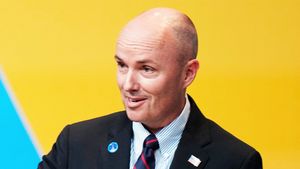A cure for HIV, long thought impossible, is now well within the mainstream of current research efforts. The case of the Berlin patient, cured in 2007, sparked a sea change in the field, providing proof that a cure was possible. However, research funding dedicated to finding a cure has been slow to catch up. While investments in cure research rose by 82 percent between 2012 and 2014, from $88.1 million to $160.8 million, this represents only a fraction of what is needed to address the enormously complex and unprecedented challenge of curing HIV.
Recognizing the urgent need to close this funding gap and build on our growing understanding of the last remaining barriers to a cure, amfAR launched the Countdown to a Cure in 2014. This ambitious initiative is aimed at developing the scientific basis of a cure for HIV by the end of 2020. We have committed to investing $100 million in innovative, cure-focused research studies that will revolutionize the field and help us make history by ending one of the worst pandemics the world has ever known.
But there’s a big difference between spending $100 million, and spending it well. In designing our new grant-making approach, we sought to fund the full spectrum of cure research, from promising new ideas to more established concepts, and from basic lab research to clinical trials. To guide these investments, we’ve developed a “research road map” that addresses four primary obstacles to a cure.
All of these obstacles are related to the stubborn persistence of HIV in viral reservoirs throughout the body, where it remains even when a patient is on treatment, and from which it can emerge and begin to replicate if treatment is stopped. To tackle this central problem, our roadmap employs a strategy we call CURE: Chart, Understand, Record, and Eliminate. Essentially, we need to find the reservoirs, understand how they work, measure the precise amount of virus they contain, and finally, get rid of them. Our message to researchers is simple: If your study will not help us develop the scientific basis for a cure by 2020, then it does not belong in our Countdown portfolio.
At the center of the Countdown is the amfAR Institute for HIV Cure Research, which is situated at the University of California, San Francisco, but includes scientists from institutions throughout the Bay Area and Pacific Northwest. Funded with a five-year, $20 million grant from amfAR, the institute represents the greatest concentration of HIV researchers in the world focusing their daily efforts on finding a cure for HIV.
In addition to the institute, we’re funding research teams at other institutions around the world through a variety of multi-year grant mechanisms. These include Innovation grants that advance preliminary but promising ideas; Impact grants to develop and test-drive more mature research ideas; Investment grants that recruit researchers, along with their expertise and cutting-edge technologies, from outside the HIV field; and the amfAR Research Consortium on HIV Eradication , which enables amfAR to design projects for research teams directly rather than waiting for them to submit ideas.
Our most recent round of innovation grants, awarded earlier this year, exemplifies our approach. Each of these early-stage studies addresses at least one of the four questions in our CURE research road map. For example, one study seeks to identify those cells harboring HIV in a sea of uninfected cells. Another aims to understand how the human DNA surrounding the virus affects our ability to remove HIV from infected cells. One of our researchers is testing new methods for measuring reservoir virus that are faster, easier and more efficient, so that scientists can assess whether viral load is decreasing in response to a potential cure intervention. Another research team is working to determine whether some populations of infected people have smaller reservoirs than others and thus may be easier to cure.
What does developing the scientific basis of a cure mean? It means developing solutions to the challenges that remain such that, by the end of 2020, we have an understanding of what it takes to cure someone of their HIV infection. As our knowledge and medical tools improve, we can begin the process of curing more and more people. A cure for AIDS is unlikely to be a simple solution, and it’s equally unlikely that it will work for everyone all of the time. We cannot promise a cure for everyone by 2020, but we can promise that our bold investments in research will bring us closer to that long-sought goal than we have ever been.
Our laser-focused approach is possible today only because we possess something that was missing in the earliest years of the epidemic: confidence that we are on the right path. But in order to stay on that path, we will need to continue to draw upon two other qualities that have characterized AIDS research and activism since the very beginning: commitment and compassion. We could not have reached this critical moment without the tens of thousands of dedicated individuals whose unwavering support helped us launch the Countdown to a Cure. We’re counting on them and many others to stand with us now as we race toward the finish line.
ROWENA JOHNSTON, Ph.D., is vice president and director of research at amfAR,the Foundation for AIDS Research.


















































































